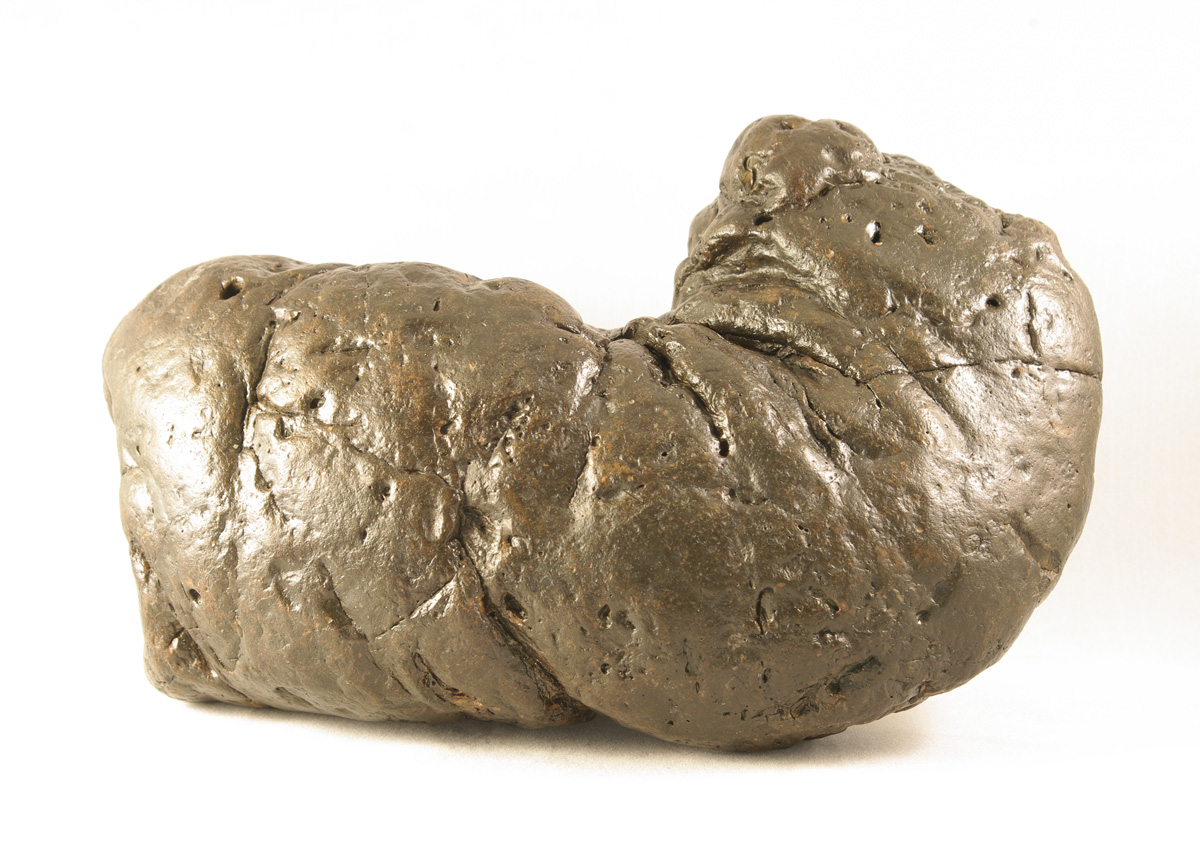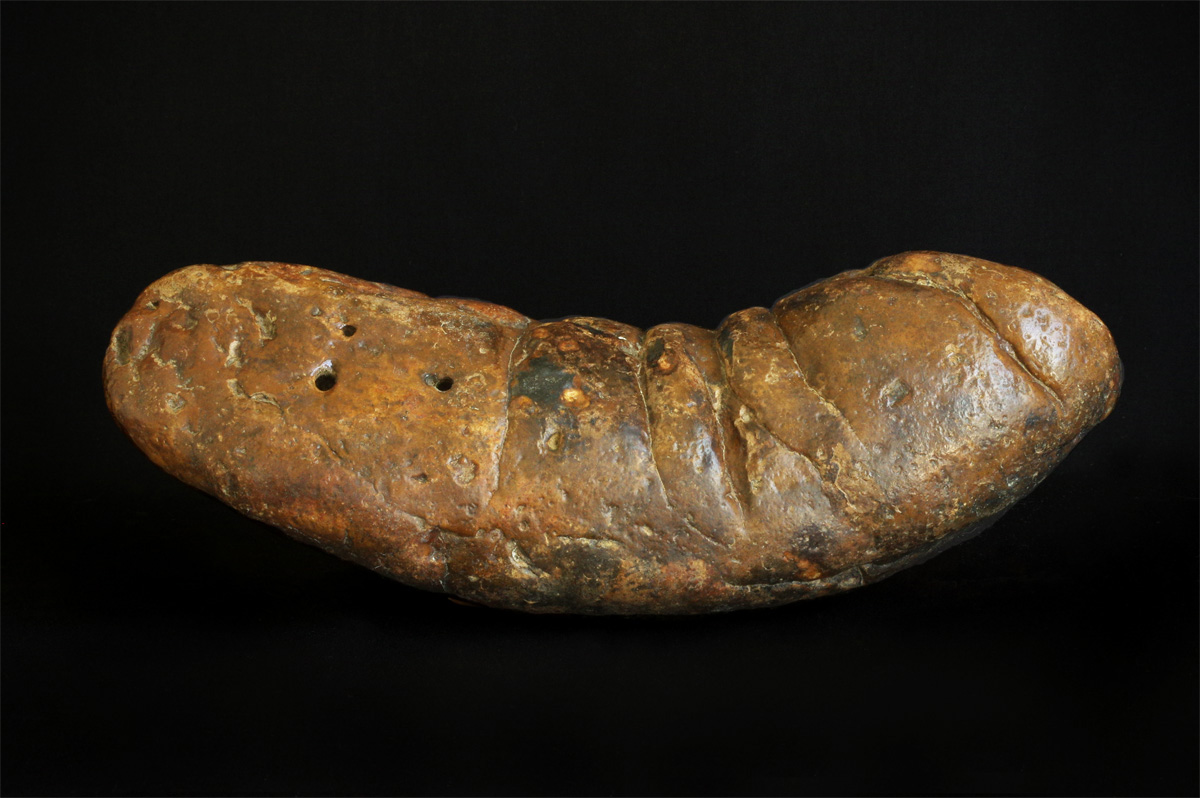Coprolite on:
[Wikipedia]
[Google]
[Amazon]



 A coprolite (also known as a coprolith) is fossilized feces. Coprolites are classified as trace fossils as opposed to body fossils, as they give evidence for the animal's behaviour (in this case, diet) rather than
A coprolite (also known as a coprolith) is fossilized feces. Coprolites are classified as trace fossils as opposed to body fossils, as they give evidence for the animal's behaviour (in this case, diet) rather than



 A coprolite (also known as a coprolith) is fossilized feces. Coprolites are classified as trace fossils as opposed to body fossils, as they give evidence for the animal's behaviour (in this case, diet) rather than
A coprolite (also known as a coprolith) is fossilized feces. Coprolites are classified as trace fossils as opposed to body fossils, as they give evidence for the animal's behaviour (in this case, diet) rather than morphology
Morphology, from the Greek and meaning "study of shape", may refer to:
Disciplines
*Morphology (archaeology), study of the shapes or forms of artifacts
*Morphology (astronomy), study of the shape of astronomical objects such as nebulae, galaxies, ...
. The name is derived from the Greek words κόπρος (''kopros'', meaning "dung") and λίθος (''lithos'', meaning "stone"). They were first described by William Buckland in 1829. Before this, they were known as "fossil fir cones" and " bezoar stones". They serve a valuable purpose in paleontology because they provide direct evidence of the predation and diet of extinct organisms. Coprolites may range in size from a few millimetres to over 60 centimetres.
Coprolites, distinct from '' paleofeces'', are fossilized animal dung. Like other fossils, coprolites have had much of their original composition replaced by mineral deposits such as silicates and calcium carbonates. Paleofeces, on the other hand, retain much of their original organic composition and can be reconstituted to determine their original chemical properties, though in practice the term coprolite is also used for ancient human faecal material in archaeological contexts.
Initial discovery
British fossil hunter Mary Anning noticed as early as 1824 that " bezoar stones" were often found in the abdominal region of ichthyosaur skeletons found in the Lias formation at Lyme Regis. She also noted that if such stones were broken open they often contained fossilized fish bones and scales as well as sometimes bones from smaller ichthyosaurs. These observations by Anning led the geologist William Buckland to propose in 1829 that the stones were fossilized feces and name them coprolites. Buckland also suspected that the spiral markings on the fossils indicated that ichthyosaurs had spiral ridges in their intestines similar to those of modern sharks and that some of these coprolites were black with ink from swallowed belemnites.Research value
By examining coprolites,paleontologists
Paleontology (), also spelled palaeontology or palæontology, is the scientific study of life that existed prior to, and sometimes including, the start of the Holocene epoch (roughly 11,700 years before present). It includes the study of foss ...
are able to find information about the diet of the animal (if bones or other food remains are present), such as whether it was a herbivore
A herbivore is an animal anatomically and physiologically adapted to eating plant material, for example foliage or marine algae, for the main component of its diet. As a result of their plant diet, herbivorous animals typically have mouthp ...
or a carnivore
A carnivore , or meat-eater (Latin, ''caro'', genitive ''carnis'', meaning meat or "flesh" and ''vorare'' meaning "to devour"), is an animal or plant whose food and energy requirements derive from animal tissues (mainly muscle, fat and other so ...
, and the taphonomy
Taphonomy is the study of how organisms decay and become fossilized or preserved in the paleontological record. The term ''taphonomy'' (from Greek , 'burial' and , 'law') was introduced to paleontology in 1940 by Soviet scientist Ivan Efremov t ...
of the coprolites, although the producer is rarely identified unambiguously, especially with more ancient examples. In some instances, knowledge about the anatomy of animals' digestive tracts can be helpful in assigning a coprolite to the animal that produced it, one example being the finding that the Triassic
The Triassic ( ) is a geologic period and system which spans 50.6 million years from the end of the Permian Period 251.902 million years ago ( Mya), to the beginning of the Jurassic Period 201.36 Mya. The Triassic is the first and shortest period ...
dinosauriform
Dinosauromorpha is a clade of avemetatarsalian archosaurs (reptiles closer to birds than to crocodilians) that includes the Dinosauria (dinosaurs) and some of their close relatives. It was originally defined to include dinosauriforms and lage ...
''Silesaurus
''Silesaurus'' is a genus of silesaurid dinosauriform from the Late Triassic, of what is now Poland.
Discovery
Fossilized remains of ''Silesaurus'' have been found in the Keuper Claystone in Krasiejów near Opole, Silesia, Poland, which is ...
'' may have been an insectivore, a suggestion which was based on the beak-like jaws of the animal and the high density of beetle remains found in associated coprolites. Further, coprolites can be analyzed for certain minerals that are known to exist in trace amounts in certain species of plant that can still be detected millions of years later. In rare cases, coprolites have even been found to contain well-preserved insect remains.
Recognizing coprolites
The recognition of coprolites is aided by their structural patterns, such as spiral or annular markings, content, undigested food fragments, and associated fossil remains. The smallest coprolites are often difficult to distinguish from inorganic pellets or from eggs. Most coprolites are composed chiefly of calcium phosphate, along with minor quantities oforganic matter
Organic matter, organic material, or natural organic matter refers to the large source of carbon-based compounds found within natural and engineered, terrestrial, and aquatic environments. It is matter composed of organic compounds that have c ...
. By analyzing coprolites, it is possible to infer the diet of the animal which produced them.
Coprolites have been recorded in deposits ranging in age from the Cambrian
The Cambrian Period ( ; sometimes symbolized Ꞓ) was the first geological period of the Paleozoic Era, and of the Phanerozoic Eon. The Cambrian lasted 53.4 million years from the end of the preceding Ediacaran Period 538.8 million years ago ( ...
period to recent times and are found worldwide. Some of them are useful as index fossil
Biostratigraphy is the branch of stratigraphy which focuses on correlating and assigning relative ages of rock strata by using the fossil assemblages contained within them.Hine, Robert. “Biostratigraphy.” ''Oxford Reference: Dictionary of Bi ...
s, such as ''Favreina'' from the Jurassic period of Haute-Savoie in France.
Some marine deposits contain a high proportion of fecal remains. However, animal excrement is easily fragmented and destroyed, so usually has little chance of becoming fossilized.
Coprolite mining
In 1842 the RevJohn Stevens Henslow
John Stevens Henslow (6 February 1796 – 16 May 1861) was a British priest, botanist and geologist. He is best remembered as friend and mentor to his pupil Charles Darwin.
Early life
Henslow was born at Rochester, Kent, the son of a solicit ...
, a professor of Botany at St John's College, Cambridge, discovered coprolites just outside Felixstowe in Suffolk in the villages of Trimley St Martin
Trimley St. Martin is a parish and village that lies between the rivers Orwell and the Deben, on the long narrow tongue of land from Ipswich to Felixstowe referred to as the Colneis Hundred.
The village, and its neighbour Trimley St. Mary, are ...
, Falkenham
Falkenham is a village and a civil parish in the East Suffolk district, in the English county of Suffolk, near the village of Kirton and the towns of Ipswich and Felixstowe. The population of the civil parish as of the 2011 census was 170.
Des ...
and Kirton and investigated their composition. Realising their potential as a source of available phosphate once they had been treated with sulphuric acid, he patented an extraction process and set about finding new sources.
Very soon, coprolites were being mined on an industrial scale for use as fertiliser due to their high phosphate content. The major area of extraction occurred over the east of England, centred on Cambridgeshire
Cambridgeshire (abbreviated Cambs.) is a county in the East of England, bordering Lincolnshire to the north, Norfolk to the north-east, Suffolk to the east, Essex and Hertfordshire to the south, and Bedfordshire and Northamptonshire to th ...
and the Isle of Ely with its refining being carried out in Ipswich by the Fison Company. There is a Coprolite Street
Coprolite Street is a street in Ipswich, Suffolk in the Waterfront area. It runs from Duke Street to Neptune Marina, the former Orwell Quay. It was named after the factory which processed coprolite, or fossilised faeces, near Ipswich Docks
The ...
near Ipswich dock
The Ipswich Docks, Ipswich wet dock and the wet dock,) are a series docks in Port of Ipswich located at a bend of the River Orwell which has been used for trade since at least the 8th Century. A wet dock was constructed in 1842 which was 'the b ...
s where the Fisons works once stood.
The industry declined in the 1880s but was revived briefly during the First World War to provide phosphates for munitions. A renewed interest in coprolite mining in the First World War extended the area of interest into parts of Buckinghamshire
Buckinghamshire (), abbreviated Bucks, is a ceremonial county in South East England that borders Greater London to the south-east, Berkshire to the south, Oxfordshire to the west, Northamptonshire to the north, Bedfordshire to the north-east ...
as far west as Woburn Sands.
See also
*Bromalite
Bromalites are the fossilized remains of material sourced from the digestive system of organisms. As such, they can be broadly considered to be trace fossils. The most well-known types of bromalites are fossilized faeces or coprolites. However, o ...
* Fecalith
A fecalith is a stone made of feces. It is a hardening of feces into lumps of varying size and may occur anywhere in the intestinal tract but is typically found in the colon. It is also called appendicolith when it occurs in the appendix and is ...
* Fossil
* Fossils and the geological timescale
* Gastrolith
* Guano
Guano (Spanish from qu, wanu) is the accumulated excrement of seabirds or bats. As a manure, guano is a highly effective fertilizer due to the high content of nitrogen, phosphate, and potassium, all key nutrients essential for plant growth. ...
* Lloyds Bank coprolite
* Regurgitalith
Regurgitaliths
are the * ''
are the * ''
The World of Poo
''The World of Poo'' is an illustrated children's book written by Terry Pratchett and illustrated by Peter Dennis. It is based on the book featured in Pratchett's ''Discworld'' novel '' Snuff'', in which Sam Vimes reads it to his now older son, ...
''
* Petrifaction
* Petrified wood
Notes
References
* * {{Authority control Trace fossils Feces Animal waste products